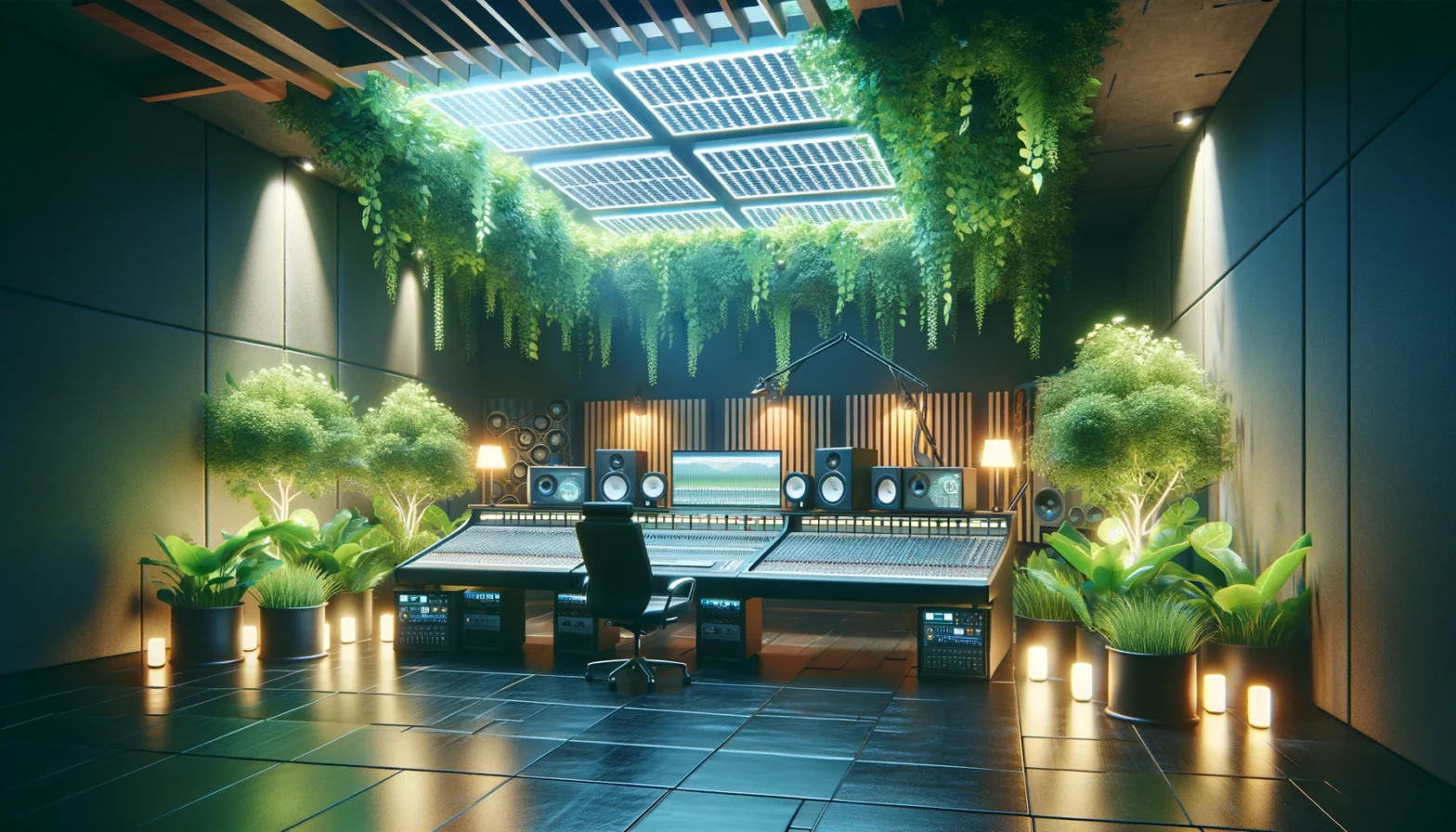In an era where environmental consciousness is more than a trend—it’s a necessity—every industry is looking for ways to minimize its carbon footprint and embrace sustainability. The music and audio production sectors are no exception. As we continue to innovate and create, it’s crucial that we do so responsibly, ensuring that our creative processes contribute positively to the planet’s health. In this post, we’ll delve into the importance of sustainability in audio production and explore practical measures for implementing eco-friendly practices in the studio.
Understanding the Environmental Impact
The process of producing music, from recording to distribution, has historically been resource-intensive. Traditional recording studios consume a significant amount of electricity, not only to power recording equipment but also for lighting, heating, and air conditioning. Physical media production, including CDs and vinyl, further contributes to environmental degradation through the use of plastics, chemicals, and the carbon emissions associated with distribution.
The Shift Towards Sustainability
Energy-Efficient Studios
The heart of sustainable audio production lies in the transformation of our creative spaces—our studios. Embracing energy-efficient technologies is a step forward. This includes the use of LED lighting, which uses at least 75% less energy than incandescent lighting, and investing in renewable energy sources like solar panels. Additionally, optimizing studio design for natural light can reduce dependency on artificial lighting, further decreasing energy consumption.
Sustainable Equipment Choices
Selecting equipment with sustainability in mind is another crucial aspect. Manufacturers are increasingly recognizing the demand for eco-friendly options, producing gear with recycled materials and designing products for longer lifespans to reduce waste. Moreover, the second-hand market for audio equipment not only offers more affordable options but also extends the lifecycle of gear, preventing it from ending up in landfills.
Digital Workflows and Distribution
The digital revolution has significantly reduced the need for physical media, cutting down the environmental impact associated with the production and distribution of CDs and vinyl. Digital audio workstations (DAWs) and cloud-based collaboration tools also minimize the need for physical travel, further reducing carbon emissions. Embracing digital distribution platforms not only aligns with eco-friendly practices but also meets the contemporary listener’s preference for digital formats.
Green Certifications and Initiatives
Studios and audio professionals can further their commitment to sustainability by pursuing green certifications and joining industry-wide initiatives focused on environmental responsibility. These certifications often involve adhering to specific standards in energy use, waste management, and sourcing of materials, providing a structured path toward eco-friendliness.
The Role of the Community
Creating a sustainable audio production industry is not solely the responsibility of individual studios or artists; it requires a collective effort. Sharing knowledge about eco-friendly practices, supporting green initiatives, and choosing to work with partners who also prioritize sustainability are all ways in which the audio production community can drive meaningful change.
Conclusion
As we forge ahead in the realm of audio production, integrating sustainability into our practices is not just beneficial—it’s imperative. By adopting energy-efficient measures, making sustainable equipment choices, embracing digital workflows, and supporting industry-wide green initiatives, we can ensure that our creative endeavors leave a positive mark on the planet. Let’s make eco-friendly audio production the standard, not the exception, as we continue to innovate and inspire through sound.
This journey towards sustainability is not just about reducing our environmental impact but also about ensuring the longevity and resilience of the audio production industry. By prioritizing eco-friendly practices, we’re not only protecting the planet but also paving the way for a more sustainable and innovative future in audio engineering.
